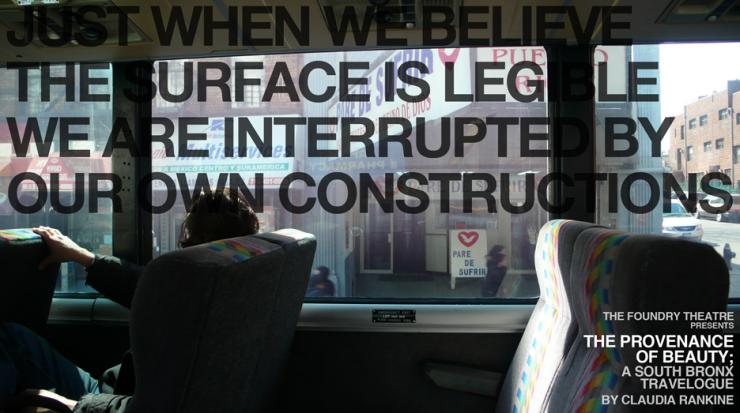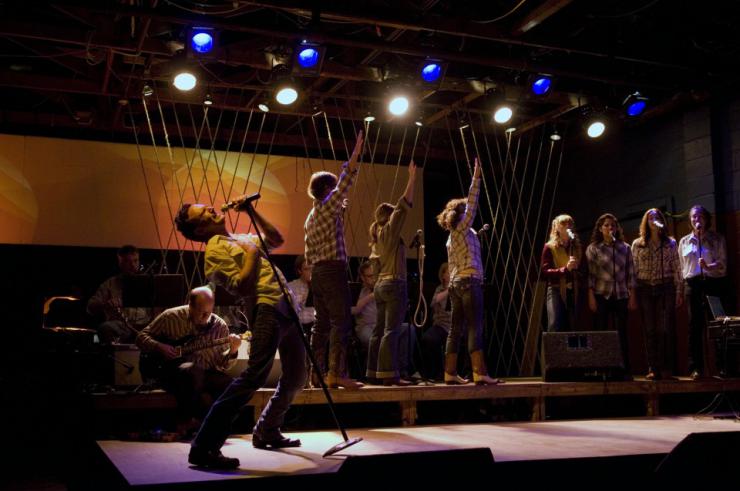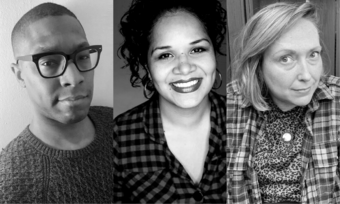From Scarcity to Abundance
A Truly Abundant Moment for the New Play Sector
“I read somewhere that beauty is produced by sustained contradiction.” —Claudia Rankine, The Provenance of Beauty
I met David Dower in 2002 at a convening in Portland, Oregon, organized by TCG in an effort to bring together disparate groups (producers, presenters, development labs) to talk about the problems facing the new work sector. David and I had never met but he was running Z Space in San Francisco, I had just taken over at the Playwrights’ Center in Minneapolis, and we had been put together at the table of the development labs. In the moment it felt a bit like being seated at the kids’ table at the family holiday meal as all of the development labs were very small and struggling to be recognized for their sustained and significant contributions. We were happy to be invited to this table but we hadn’t found our voices and we didn’t feel heard over the din of the larger producing entities, so we broke off with a few other folks and started talking. For David and I, it was the beginning of a conversation that we’re still smack in the middle of. It’s a conversation that includes, among other things, a concern about artists and their importance to the day-to-day operations of our institutions.
Fast-forward nine years. David and I now work in those very large institutions we felt silenced by in 2002. David put together his own new works convening where he was definitely no longer at the kids’ table! He’s learned a lot about tables and how they function and so much of what made this convening feel abundant had everything to do with tables, how they were configured and who was sitting at them.
The convening took place in the Arena Stage’s new Molly Smith Study, a beautiful, light-filled room where, as Molly said during the convening, the incredibly high ceilings allowed so many ideas to coexist freely. Less headspace, Molly conjectured, would have clogged the airways. I’m convinced she was right. There was a table placed in the center of the study with about eight or so chairs and then a group of chairs surrounding that table. Two rings of participants, the third ring represented by a larger monitor with an active twitter feed that was in motion throughout the convening. Significantly, the makeup of all of the rings of participants were an equal mix artist, institution, big, small, mid-size, devised, kitchen-sink, actor, producer, director, dramaturg, tall, short, wide, and narrow. It was neither a melting pot nor a salad bowl, or even a stew, but rather a study in contradictions about theatre practice and practitioners.
It is my hope that... we are in a new tense requiring a different syntax—more active, less passive—sustained by the contradictions and conflicts of waiting, beauty, and new work
Although there’s been a lot of buzz about NEA Chairman Rocco Landesman’s supply/demand conversation with Diane Ragsdale that opened the convening—“are there too many theatres?”—this was only a sidebar for the convening participants. Of more interest were conversations about the impact artists can and should have on institutions. What if, for example, we not only gave artists residencies in our theaters but what if we brought their practices and processes to bear on how we run organizations? We asked questions about the “who” of theatremaking and Meiyin Wang, Associate Producer of Under the Radar Festival in New York, asked when will we get over titles—director, dramaturg, producer, actor—and begin to talk about theatremakers. Many wondered how such distinctions serve the larger project of collaboration essential to any theatre process. Aesthetics was a word that emerged regularly with Neil Barclay, CEO of the National Black Arts Festival, conjecturing on the need to be honest with ourselves about how what we’re making matters and hoped that our conversations about diversity might extend to the question of aesthetics.


And it was impossible not to think about aesthetics after seeing the amazing work showcased at the convening, the result of projects funded by the NEA’s National Play Development Program that Arena Stage ran for one year. The Provenance of Beauty by Claudia Rankine, produced by The Foundry, I’ve Never Been So Happy, by the Rude Mechanicals, and Pastures of Heaven a collaboration between Word for Word and California Shakespeare Festival. The work, as it tends to, made the conversation more concrete and supported David Dower’s strong sense that the new play sector is in a period of abundance that is our communal responsibility to capture.
The second day of the convening I woke up in my hotel to a new essay from Lynette (my partner/girlfriend/lover/whatever you say when you’re gay) and the first line was from Christopher Alexander’s A Pattern Language—“The process of waiting has inherent conflicts in it.” In the theater we confront these conflicts all of the time as we wait to hear if a script has been accepted for production, or we wait for a review of a show we worked on for years—the conflict in the waiting reflected in the mix of anxiety and hopeful anticipation. In this way waiting is like beauty, like the beauty of the South Bronx we witnessed on the simulated bus tour in the Foundry’s The Provenance of Beauty, sustained, as Claudia Rankine writes, by contradictions—the riches of people and cultures juxtaposed against sewage treatment plants and facilities for incarceration.
Lynette likes to wait. She likes to be stuck in traffic. She thinks of waiting as something that exists in the present perfect tense, as she says, “an action that happened at an indefinite time in the past or that began in the past and continues in the present. Present perfect.” I hate waiting, but wait I must, and the nine-year spread from 2002 to 2011, that stretch between conversations about the new work sector, is like a time in the past that continues in the present, a time of waiting for the evolution of conversations around inclusion, aesthetics, artists, institutions, and access. It is my hope that post-convening we are in a new tense requiring a different syntax—more active, less passive—sustained by the contradictions and conflicts of waiting, beauty, and new work.













Comments
The article is just the start of the conversation—we want to know what you think about this subject, too! HowlRound is a space for knowledge-sharing, and we welcome spirited, thoughtful, and on-topic dialogue. Find our full comments policy here